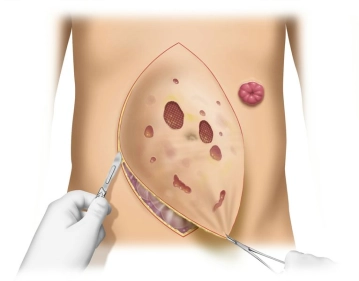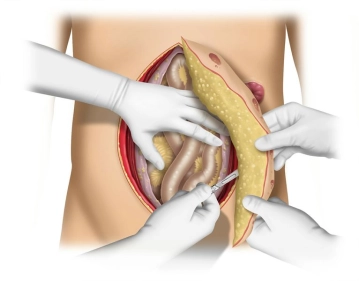Status post median laparotomy with sigmoid resection and creation of an end colostomy (Hartmann's situation). Now progressive scar hernia recurrence with skin ulceration and partially exposed mesh after multiple therapeutic attempts, most recently with the implantation of a non-resorbable mesh in onlay technique.
After conditioning of the abdominal wall through a preoperative progressive pneumoperitoneum (see Sublay Open Perioperative Management), a renewed hernia repair is performed using the technique described here. The AP reversal offered to the patient with reconnection of the colon was not desired.
In potentially infected sites, the use of a biological mesh is indicated for hernia repair.
First, marking of the incision line, then the skin incision begins laterally on the right. This is successively completed during the course of the procedure to a complete circumcision of the hernia sac and excision of the ulcerated and thinned skin areas.






